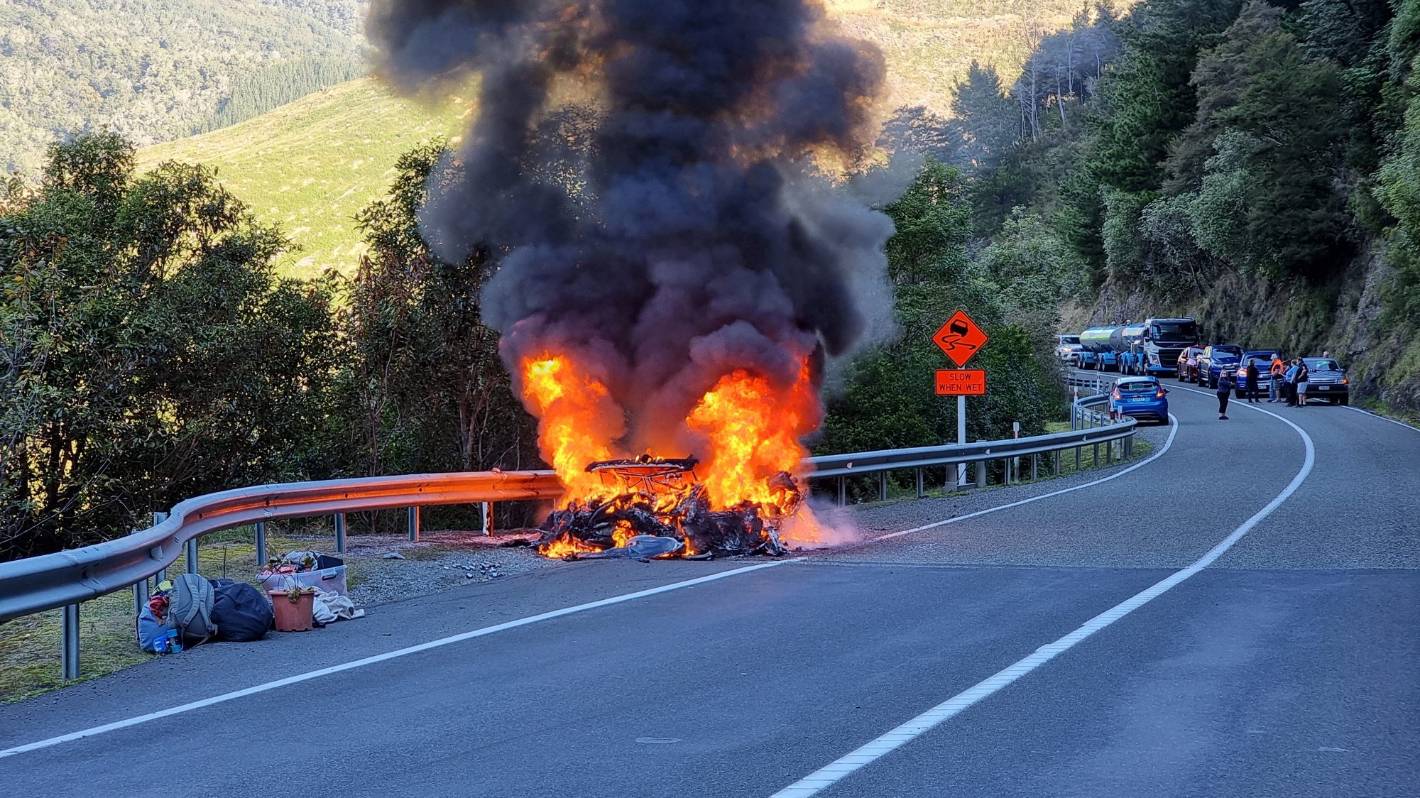The Bedfordshire Fire Service has posted the following on their website to inform people about electric vehicle fires in England’s green and pleasant land. (Apologies to to William Blake.)
Causes of an EV Fire
Electric vehicles are powered most commonly by a rechargeable lithium-ion battery. The first lithium-ion battery was invented in the 1990s and it was used to power a car in the early 2000s.
In comparison, petrol and diesel vehicles have been around for well over 100 years, so comparatively we are yet to obtain the same data and understanding when it comes to product safety.
Fundamentally, electric vehicles are extremely safe, but the main danger occurs when the lithium-ion battery is damaged, which might happen if it is exposed to extreme heat or something penetrates the battery cell wall.
Professor Paul Christensen from the University of Newcastle is an expert in the field of EV fires and explained to Air Quality News: ‘Lithium-ion batteries are amazing, and the reason they’re amazing is because they can store a huge amount of energy in a very small space.
‘But naturally, that energy will try and get out.
‘If the battery is exposed to excessive heat, or there is a penetration in the battery case, then you get an internal short circuit.
‘This short circuit causes what is called Joule heating, this is when the electricity passing through causes heat and you cannot get rid of the heat as fast as you are generating it.
‘Then because of this heat, a chemical reaction takes place which generates more heat, which then causes the chemical reaction to go even faster, and as you can see it’s a vicious cycle.
This is a process called thermal runaway and it can lead to ignition, or in some cases even explosion.’ […]
The Main Risks
Although these fires remain rare, when they do occur, they can be extremely dangerous.
During an electric vehicle fire, over 100 organic chemicals are generated, including some incredibly toxic gases such as carbon monoxide and hydrogen cyanide – both of which are fatal to humans.
According to George Maloney, sub-officer in the operational team at the London Fire Brigade, the fire services are prepared for dealing with these toxic gases: ‘When dealing with any sort of vehicle fire, the fire brigade will always wear full PPE with respiratory equipment.
‘As far as we know, this seems to provide adequate protection against these toxic gases.
‘However, this level of protection isn’t necessarily available for all members of the public or for individuals from other public services.
It’s a dynamic situation in that we are still learning about how EV fires behave, but the guidance is consistent, always wear full protective gear.’
Putting Out the Fire
For the fire brigade, the real problem when it comes to an EV fire is with trying to put it out.
The services have two main options, let the fire burn out or extinguish it.
The obvious choice seems to be to extinguish the fire, however many EV manufacturers actually advise for a controlled burn. This is where the fire services allow the vehicle to burn out while they focus on protecting the surrounding area.
Once the fire has been successfully put out, the problem for the fire brigade is not over.
Electric vehicle fires are known to reignite hours, days or even weeks after the initial event, and they can do so many times.
Not only does this pose a safety issue, but it also poses a legal issue: recovery firms are increasingly concerned about dealing with electric vehicles.
Preparing for These Fires
Fire services across the country are working hard to improve their knowledge and understanding of these fires to ensure that they are prepared as we inevitably see more EVs on the roads.
Services internationally have also been trialling new alternative options to extinguish the fires, for example, a full submersion of the battery, however, at the moment the success of this method remains uncertain. […]
In general terms, the fire services are not yet fully prepared, but they are working hard to understand the new risks. Fundamentally, they are going to need a lot more help and funding from the government.

